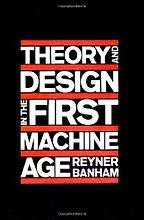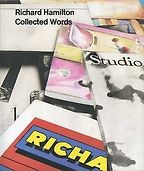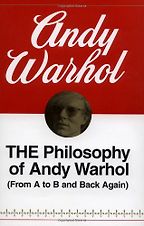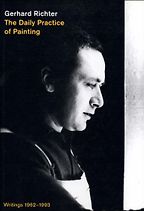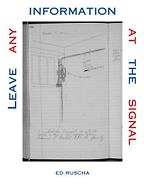What do you mean by the “first pop age”, the title of your book?
Soon after World War II there emerged a new kind of society that we have come to call “consumer society” or “the society of spectacle”. Not only did commodities and images become much more pervasive, but they also became more and more alike. I’m interested in how the most astute artists of the time addressed this new image-world, and in how this world transformed both the art of painting and the nature of subjectivity.
Why do you think pop art was so controversial to begin with?
It was read simply in terms of its content, which was an affront to the old guardians of the fine arts. Never before had they seen Disney characters or comic book figures or nasty news images in the realm of high painting. The first critics saw only the subject matter, rather than how the content was transformed by the artists. However subtle, these transformations were always significant.
How did it manage to then become such a large part of the establishment?
Pop art was taken up enthusiastically by the public at large. This was the first moment in the 20th century when the art audience expanded greatly. Previously, it was often said, the art world in New York was a matter of 300 people and 10 galleries. Pop art expanded this art world many times over. The boom years of the 1960s also produced new collectors with a new kind of taste. They wanted their own experience to be reflected in art and they saw it in pop.
You could say that your first choice lay the foundation for pop art. Theory and Design in the First Machine Age by Reyner Banham explores how European architects in the early 20th century had a profound influence on what was to come.
This is still a very important book today. Reyner Banham revised what we understand as modern architecture. The first designers, critics and historians saw modern architecture mostly in terms of how industrial technology had transformed structure and space. Banham focused instead on the imaging of these new technologies, which led him to stress expressionist and futurist architecture far more than the first generation of readers of modern architecture. His revision was also an attempt to periodise modern design. The book was written in the context of the Independent Group in London – the group that launched the idea of pop art. From that moment Banham had enough distance from the modern movement of the 1920s and 1930s to reassess it.
In what way did he think that these European architects had influenced pop art?
As his key criteria was the imaging of technology, Banham supported architects like [the avant-garde architectural group] Archigram. In a way they were neo-futurists. They embraced the wildest fantasies about new technologies, and how they might transform contemporary architecture and urbanism beyond recognition.
Get the weekly Five Books newsletter
This book is important for me personally because it offers a model of how a critic-historian, inspired by changes in his own time, can look back to a prior moment of transformation and not only see it anew but also put it in parallax with his own moment. As one reads the book, one goes back and forth between the historical object of study and the contemporary scene of Banham and friends. The double focus clarifies both times.
The British artist Richard Hamilton, who died recently, is considered to be one of the forerunners of pop art. What insights does his book Collected Words give us into his art?
Richard Hamilton is a key artist who, though well-known in the UK and Europe, is not very familiar in the US. I chose Collected Words because it is the best analysis of his work that we have. He was always the most astute critic of his art.
Just as important is his analysis of new forms of popular culture and mass media as they emerged. The book, which spans 30 years of his writing, serves as a compressed history of these new technologies. In addition, Hamilton was one of the inventors of pop prose. He developed a new language that mimicked – both ironically and reverentially – the idioms of the ad-men of the time. It is full of the lingo of the moment, re-functioned to critical ends with jazzy terms and speedy phrases pushed to a parodic extreme.
Which ones spring to mind?
Well, his definition of pop is a good example. It appears in a letter to the architects Peter and Alison Smithson which Hamilton wrote in 1957. Pop art is:
“Popular (designed for a mass audience); Transient (short term solution); Expendable (easily forgotten); Low Cost; Mass Produced; Young (aimed at Youth); Witty; Sexy; Gimmicky; Glamorous; and Big Business”
There are so many slogans here that became crucial to pop, and the list comes before the art even existed as such. That is the kind of acumen Hamilton had.
What kind of legacy has he left us?
He was so important to pop, but he was equally important to many other crucial moments in 20th century art. He was involved in the art-design interface early on. He was also an innovator in exhibitions – the arrangement of work was absolutely transformed by Hamilton. He had a consistent fascination with new technologies. He actually constructed his own stereo and his own computer, and he was one of the first artists to employ computer programmes in painting.
Hamilton was also essential to the reception of Marcel Duchamp. He worked on the translation of the notes that Duchamp made for his most important work, The Large Glass. He also reconstructed The Large Glass and did other works after Duchamp. So Hamilton had a manifold career. To talk to him was to be in communication with some of the most important ideas in 20th century art.
The Philosophy of Andy Warhol, written by the man himself, takes us back to the US and looks at arguably the best known pop artist of them all.
My version of Warhol is very different from others’. So often he is seen as the artist most at ease with the iconicity of celebrities and products, and with the image-world of consumer society at large. I focus instead on how distressed his works are. They show how difficult it is to project an image and sustain a brand, no matter who you are – star, criminal or average Joe.
My work on Warhol looks to the complexity of his work rather than to its superficiality. There are many layers to Warhol so I don’t stop at the surface, even though his most famous line – from this book and other statements – declaims that he is all surface and there is nothing behind the surface.
In The Philosophy of Andy Warhol he adopts the persona of idiot savant. He says idiotic things that are weirdly deep. For example, at one point he ponders death for a moment and then asks, “How can any of us know what it is? We are the last people to know about death because we never experience it as such.” He was shot in 1968 by a crazed hanger-on at his studio and almost died. When he came out of his coma he thought he was watching his own funeral on television in his hospital room. It turned out to be the funeral of Bobby Kennedy, who was shot a couple of days after Warhol. This prompts an extraordinary meditation on mortality, perhaps the grandest subject of philosophy, even though Warhol says he has absolutely nothing to say about it.
Next up is The Daily Practice of Painting by Gerhard Richter, who is another key figure in the pop art movement, and often described as the master of the paradoxical statement.
In many ways Gerhard is the opposite of Warhol in his writings and conversations. Warhol, in his early interviews, would say things like, “Ask somebody else something else, I am too stoned to talk right now.” Far from a Warholian idiot savant, Richter is immersed in the tradition of German idealist philosophy and romantic painting, and that of modernist art. He has European culture at his fingertips, and that is fully evident not only in his paintings but also in his texts, as collected in The Daily Practice of Painting.
Five Books interviews are expensive to produce. If you're enjoying this interview, please support us by donating a small amount.
As you say, Richter is paradoxical. More than any other artist I discuss here, he takes on the full force of European art – its full burden if you like. At the same time he understands that it is completely transformed by spectacular society and mass media. It is that doubleness that makes his works and his writings so paradoxical. He wants to hold on to the grand tradition, even as he understands that it is utterly transformed by modernist art and mass culture alike.
What kinds of thing was he painting?
Richter does all the traditional genres of painting: Landscape, portraiture, still life, even history painting. But these are all shot through with the photographic. That’s why my chapter on his work is titled “Gerhard Richter, or The Photogenic Image”. What he shows us in his paintings is how we see the world through a photographic-filmic lens – and now an electronic lens as well.
Rather than through a canvas.
Yes, the canvas is no longer a window to a natural world. It is mediated many times over. Even as Richter treats the grand old subjects of European painting, he also shows how we are fully mediated in our experience.
Finally you have chosen Ed Ruscha’s Leave Any Information at the Signal.
In a way Ruscha’s work falls between Warhol’s and Richter’s. On the one hand, like Warhol, he says he is not much interested in traditional European art. On the other hand, like Richter, he actually treats with old forms like landscape. But he, too, transforms them utterly. His landscape is the landscape of Los Angeles, so he sees it through the windshield of a car and it is mediated by billboards and movies. Like Warhol he is fully committed to what it is to be a modern subject. Yet like Richter he holds on to painting even as he shows how changed it is.
He is also famous for choosing some unusual mediums to paint in, including food, blood and gunpowder.
Yes, he experimented with strange materials to be sure. He was interested in what he called “liquid painting”, so he used bizarre fluids to make some of his images. In my chapter on Ruscha I focus on his “deadpan” effects. Like Warhol, he flattens out the effect of his photographs and the colours in his paintings often feel very medicated. But in each instance there is a little note of ambiguity. This is especially the case in his word paintings. He calls it the “huh?” effect. So even though his work seems very flat there is always a riddle that keeps us engaged.
September 4, 2012. Updated: May 18, 2020
Five Books aims to keep its book recommendations and interviews up to date. If you are the interviewee and would like to update your choice of books (or even just what you say about them) please email us at [email protected]
